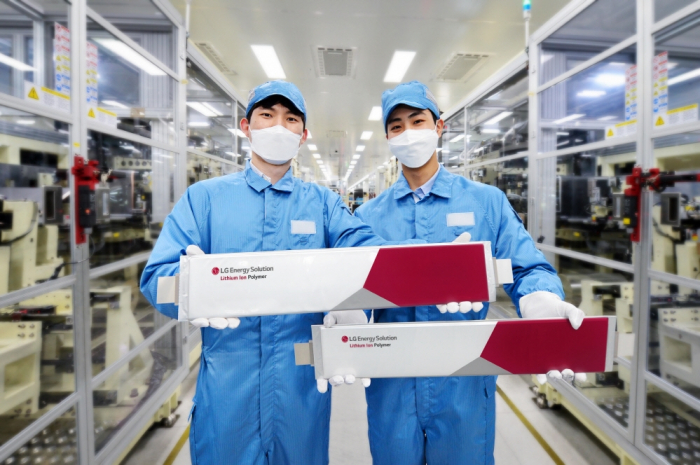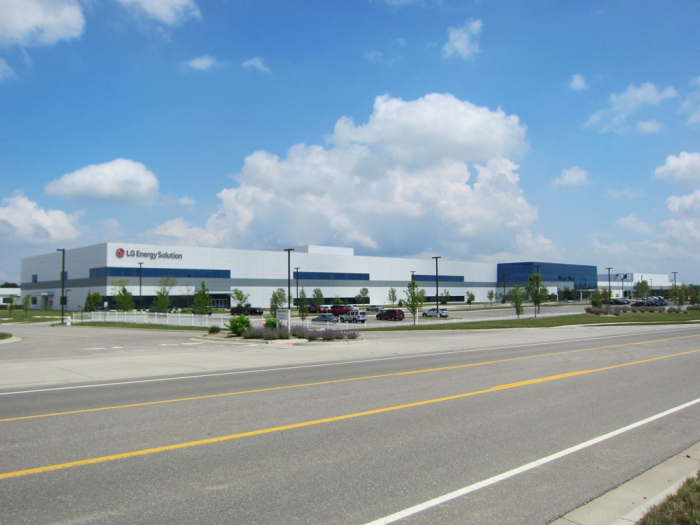Batteries
LG Energy to spend more on battery capacity expansion
The world’s second-largest battery maker is in talks with customers to share rising costs of non-metal raw materials
By Apr 27, 2022 (Gmt+09:00)
2
Min read
Most Read
LG Chem to sell water filter business to Glenwood PE for $692 million


Kyobo Life poised to buy Japan’s SBI Group-owned savings bank


KT&G eyes overseas M&A after rejecting activist fund's offer


StockX in merger talks with Naver’s online reseller Kream


Mirae Asset to be named Korea Post’s core real estate fund operator



LG Energy Solution Ltd., the world’s second-largest electric vehicle battery maker, plans to spend more on global capacity expansion than initially projected as the South Korean company is ramping up production around the world to meet growing demand.
LG Energy is set to invest 7 trillion won ($5.5 billion) in capital expenditures this year, up from its initial plan of 6.3 trillion won, to more than double its total annual battery output to 520 gigawatt hours (GWh) by 2025 from a predicted 200 GWh as of the end-2022, the company said on Wednesday.
“The total investment was expected to rise on various new projects such as the construction of new plants and expanding existing joint venture factories and our own in North America, as well as the expansion of cylindrical battery production lines in China,” LG Energy said in a statement.
The company will spend the money on plants built with global carmakers such as General Motors Co. and Stellantis N.V. in North America, as well as a factory in Nanjing, China, and production facilities in Poland and South Korea.
LG Energy has secured an order backlog worth more than 300 trillion won as of end-March, rising more than 15% from 260 trillion won earlier this year.

TO REFLECT NON-METAL MATERIAL COSTS IN PRICES
LG Energy is in talks with customers to share costs of non-metal ingredients such as anode materials, electrolytes, binders and separators in product prices to hedge raw materials volatility risk, a company executive said in an earnings call.
The company is currently reflecting changes in prices of not only key battery materials including lithium, nickel and cobalt, but also costs of others such as copper, aluminum and manganese when it adjusts contract prices with automakers.
That came as its operating profit fell 24.1% to 258.9 billion won in the first quarter from a year earlier even as sales grew 2.1% to 4.3 trillion won. The company reported an operating profit margin of 6%.
“Second-quarter sales are expected to see double-digit growth compared to the first quarter while profitability is unlikely to significantly differ from the first,” said the executive. “We don't expect to win orders unless we can secure target profitability.”
NEW BATTERY WITH HIGHER CAPACITY
LG Energy aims to increase sales by 8% to 19.2 trillion won in 2022 from last year's 17.9 trillion won, which was its record annual revenue and 42% higher than the year previous.
The company plans to take the lead in the industry by developing a high-capacity cylindrical battery in a new form factor, another executive said.
“We are preparing for mass production when customers need them,” said the executive.
LG Energy is reportedly developing the 4680 battery cell, which has greater capacity than the existing 2170 models, as Tesla Inc., the world’s top EV maker, plans to produce vehicles equipped with the next-generation battery.
Write to Hyung-Kyu Kim at khk@hankyung.com
Jongwoo Cheon edited this article.
More to Read
-
 EarningsLG Energy Q1 profit beats forecast on strong demand, price hikes
EarningsLG Energy Q1 profit beats forecast on strong demand, price hikesApr 07, 2022 (Gmt+09:00)
1 Min read -
 BatteriesLG Energy, Stellantis to build $4.1 billion battery plant in Canada
BatteriesLG Energy, Stellantis to build $4.1 billion battery plant in CanadaMar 24, 2022 (Gmt+09:00)
4 Min read -

Comment 0
LOG IN


